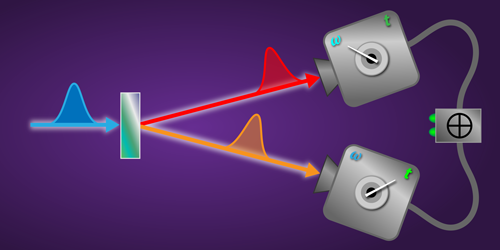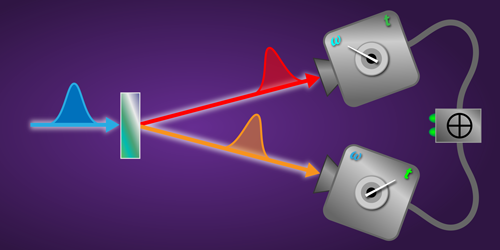Detecting Energy-Time Entanglement
Two photons can be entangled in multiple ways, including through their energies and emission times. Such energy-time entanglement can mean, for instance, that the measured frequency of one entangled photon can be used to determine when its partner will arrive at a separate detector. And since this type of entanglement is robust over long distances, it could be useful for quantum information applications. But observing energy-time entanglement directly has proved tricky because experiments have lacked the necessary resolution in both the time and frequency domains. Jean-Philippe MacLean and his colleagues from the University of Waterloo in Canada overcome this problem with an ultrafast single-photon detection system that can measure the quantum correlations between energy-time entangled photons.
In general, two particles are called entangled when measurements of the pair reveal strong correlations that are not allowed classically. For energy-time entanglement, the telltale correlation is a reduced uncertainty in the measured frequencies and arrival times of the two photons. In order to observe this behavior, MacLean and colleagues studied photon pairs produced from a laser pulse striking a nonlinear crystal. For each pair, the photons were split into two separate paths, which the researchers configured to measure either frequency or arrival time. The frequency measurement used a standard grating-based filter, whereas the time measurement relied on a recently developed optical gating technique that combines a single photon signal with a subpicosecond “gate” pulse. The team counted the number of photon pairs for different detector settings and found that the spread in frequencies and arrival times matched the expectations for entangled photons. The setup might be incorporated, for example, into a quantum cryptography protocol to verify that shared information hasn’t been compromised.
This research is published in Physical Review Letters.
–Michael Schirber
Michael Schirber is a Corresponding Editor for Physics based in Lyon, France.





